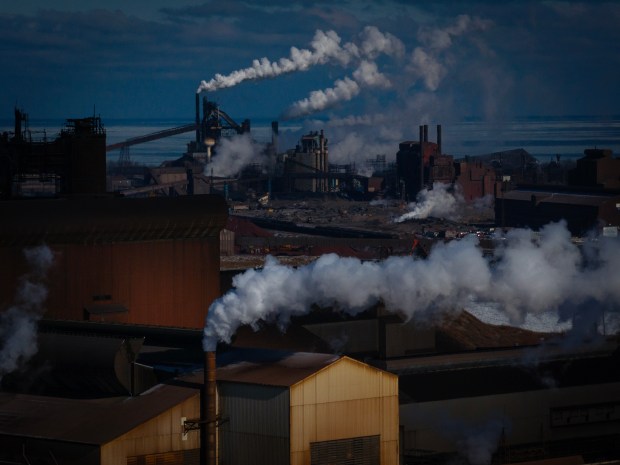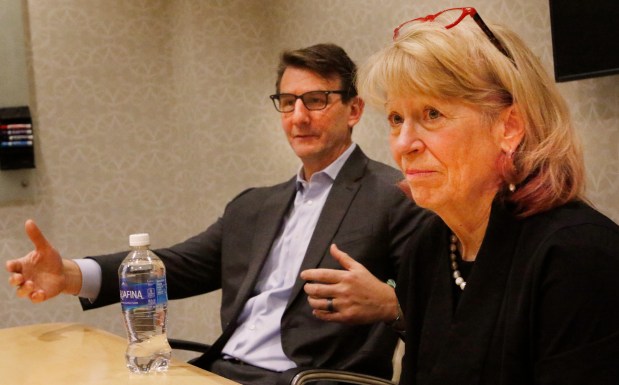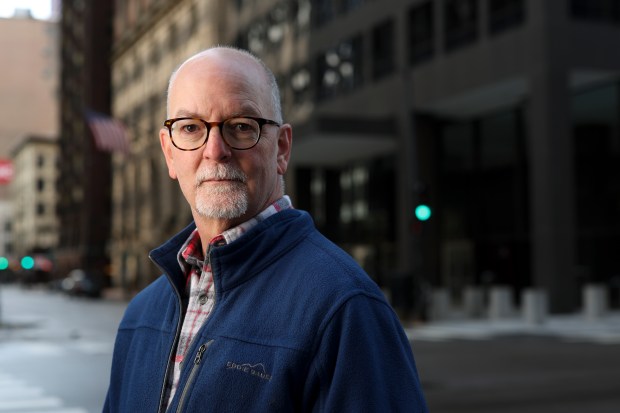A recently signed executive order by President Donald Trump has Northwest Indiana environmental advocates concerned about upcoming energy policies.
Trump’s executive order, “Unleashing American Energy,” was signed after his Jan. 20 inauguration. The order outlines how the Trump administration plans for the U.S. to stay a “global energy leader long into the future.”
“In recent years, burdensome and ideologically motivated regulations have impeded the development of these resources, limited the generation of reliable and affordable electricity, reduced job creation, and inflicted high energy costs upon our citizens,” said Trump’s executive order. “These high energy costs devastate American consumers by driving up the cost of transportation, heating, utilities, farming, and manufacturing, while weakening our national security.”
The executive order also terminates the Green New Deal, which aims to use public resources to help transition from a reliance on fossil fuels to clean energy, according to the Sierra Club’s website.
The order calls for an immediate pause to the spending of federal funds tied to the Inflation Reduction Act and Infrastructure Law, according to Marketplace.
U.S. Rep. Frank Mrvan, D-Highland, said in a statement that while federal departments work toward deciphering the administration’s executive orders, he will work toward ensuring “that transportation and infrastructure projects that positively impact Northwest Indiana under these laws are implemented.”
Mrvan, who is a member of the House Appropriations Committee, said he has a role in working on programs through the Department of Energy. In that role, he will ensure the MachH2 Hydrogen Hub project moves forward.
“I continue to believe that the Hydrogen Hub project at the BP facility in Whiting will undoubtedly create new good-paying jobs and generate new economic activity in our region for years to come,” Mrvan said.
In November, the Midwest Alliance for Clean Hydrogen, or MachH2, and the U.S. Department of Energy announced an agreement for a Phase 1 award status, which says the hub will receive $22.2 million in initial federal funding, according to Post-Tribune archives.
The hub could receive up to $1 billion as the project continues.
MachH2 will service Indiana, Illinois and Michigan, and will ship about 23 million tons of carbon dioxide and other byproducts through pipelines starting in Lake County and stretching five counties south, according to Post-Tribune archives.

Energy firms BP and NiSource, steelmaker Cleveland-Cliffs and Purdue University Northwest are the hub’s partners.
The region’s environmental advocates have been concerned about the hydrogen hub and said it’s not environmentally friendly. Susan Thomas, legislative and policy director for Just Transition Northwest Indiana, is concerned because the hub will create blue hydrogen, which relies on methane or fossil fuels.
“It serves the fossil fuel industry,” Thomas said. “It was never a green energy plan. It was a fig leaf for oil and gas to continue fracking, to continue doing what they do. So the question is, will this program be halted? Will these funds be clawed back?”
The fossil fuel industry won’t be hurting during the Trump administration, Thomas said, adding that the hydrogen hub project might be repackaged. There’s a chance the project could be abandoned under the Trump administration.
“We just don’t know what’s going to happen,” Thomas said.
Thomas is also concerned about Trump’s other environmental actions, including pulling out of the Paris Climate Agreement, which is the legally binding international treaty on climate change, according to the agreement’s website.
Thomas encourages residents to become hyperlocal, meaning focusing on getting involved locally to help the environment.
“Get to know your neighbors,” she said. “Get to know community gardens and church organizations and where we can work together to get through this time.”
Carolyn McCrady, member of Gary Advocates for Responsible Development, said the organization is worried how continuing to rely on fossil fuels will impact communities like Gary.
Gary is one of five U.S. cities with the nation’s lowest life expectancy, according to GARD data. School-aged children East Chicago and Gary are exposed to higher levels of airborne toxins than anywhere in the country, data said.
Asthma prevalence for Gary adults is among the worst in the U.S., and Lake County is among Indiana counties with the highest cancer mortality rates.
“Hydrogen hubs are false solutions,” McCrady said. “We don’t need them. What we need is energy that is created through renewables. That is ultimately what will save the planet, not hydrogen hubs.”
The order also left uncertain the Indiana Department of Transportation’s plan to invest nearly $100 million to build an electric vehicle charging network along the state’s interstates and highways. The Charging the Crossroads initiative would have been funded through the National Electric Vehicle Infrastructure (NEVI) program.
This week the program’s web page contained an update that read in part: “Due to recent developments at the federal level, NEVI, along with several other initiatives, is currently under review by the federal government. INDOT is evaluating all recently released guidance and will provide an update as more information becomes available.”
“(INDOT) is awaiting further guidance from the Federal Highway Administration. The agency will continue to work with our federal partners during this time of transition,” spokeswoman Natalie Garrett said.





